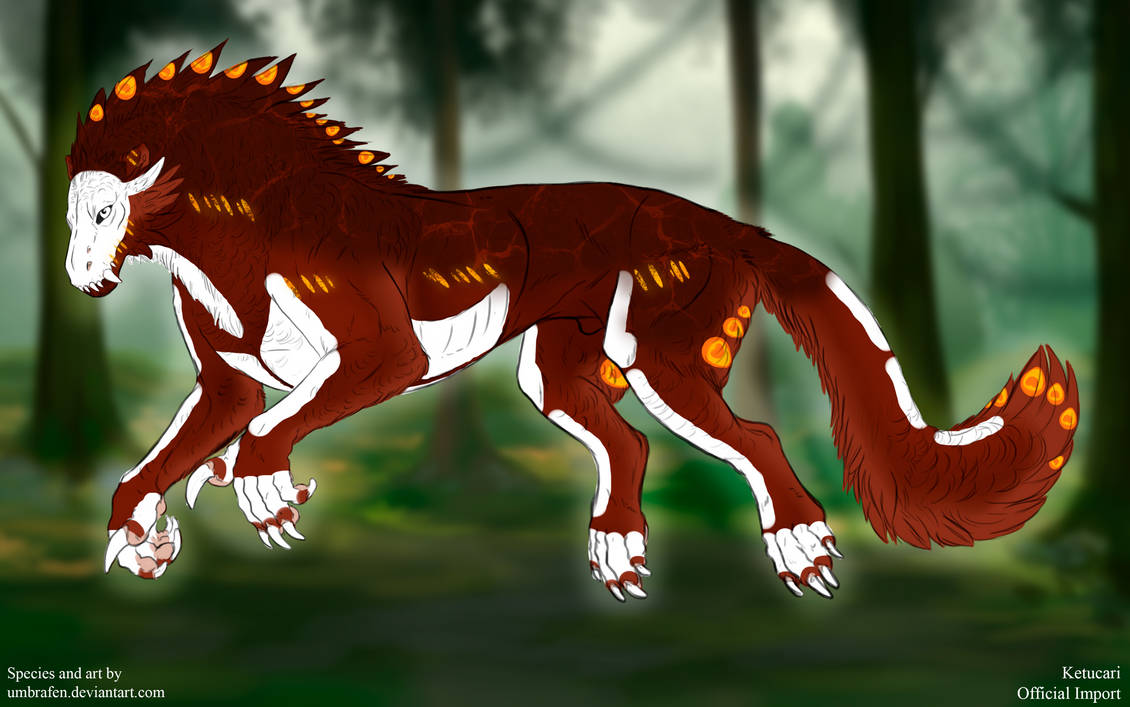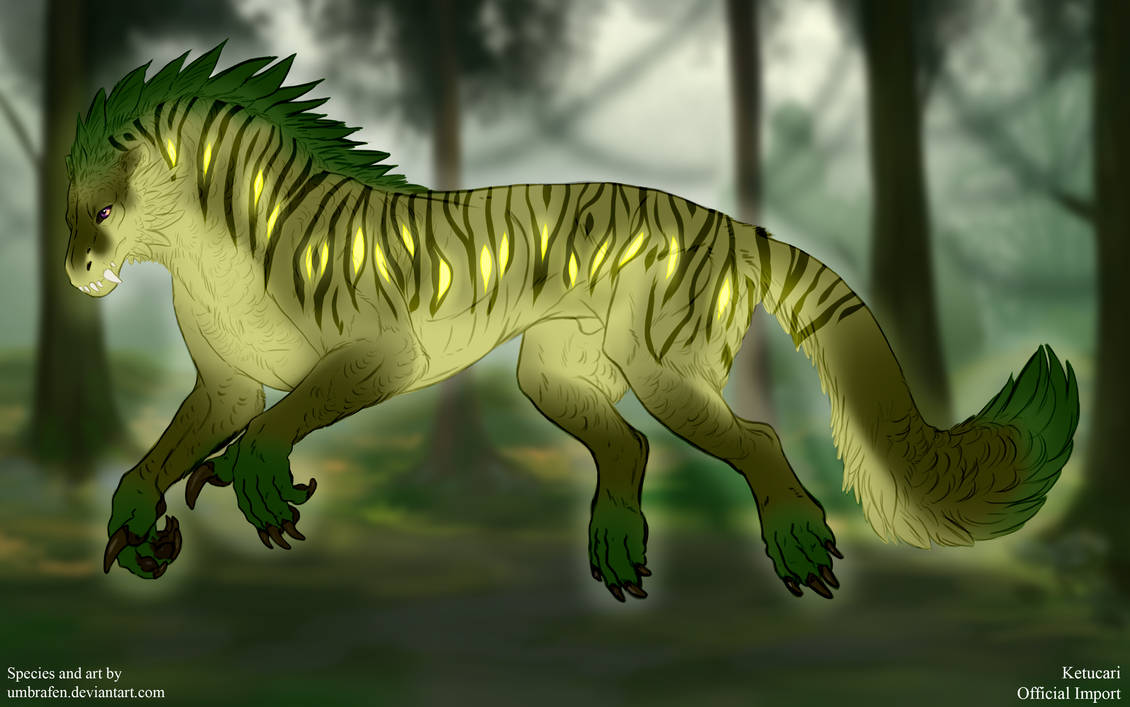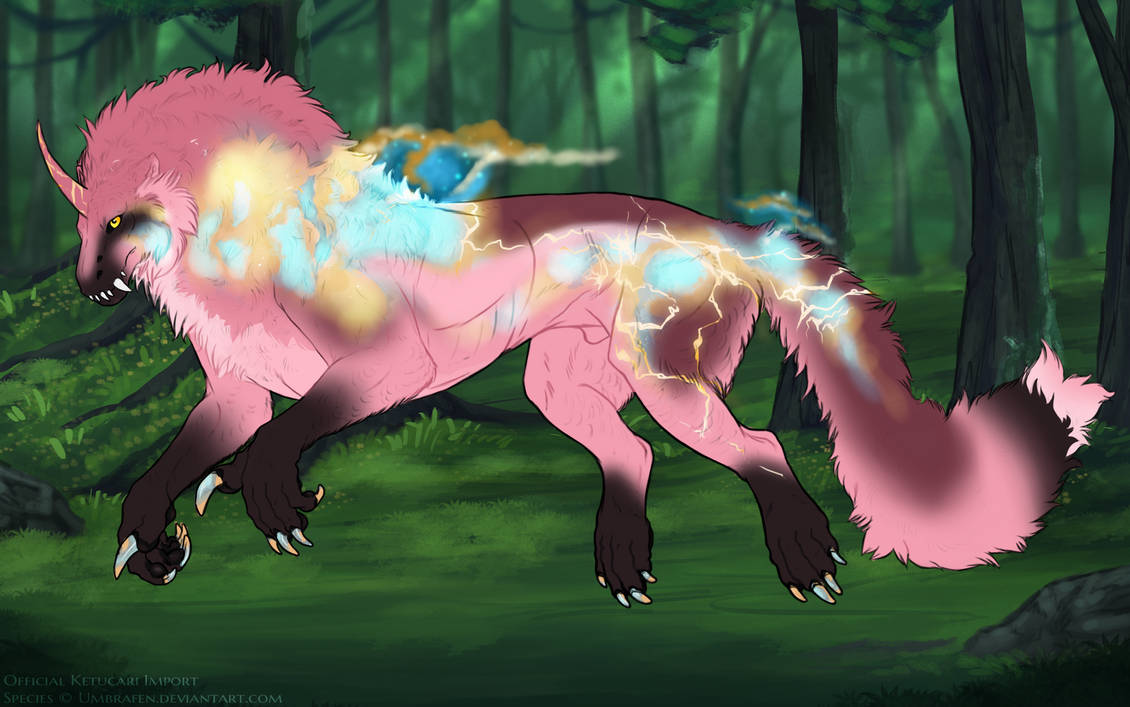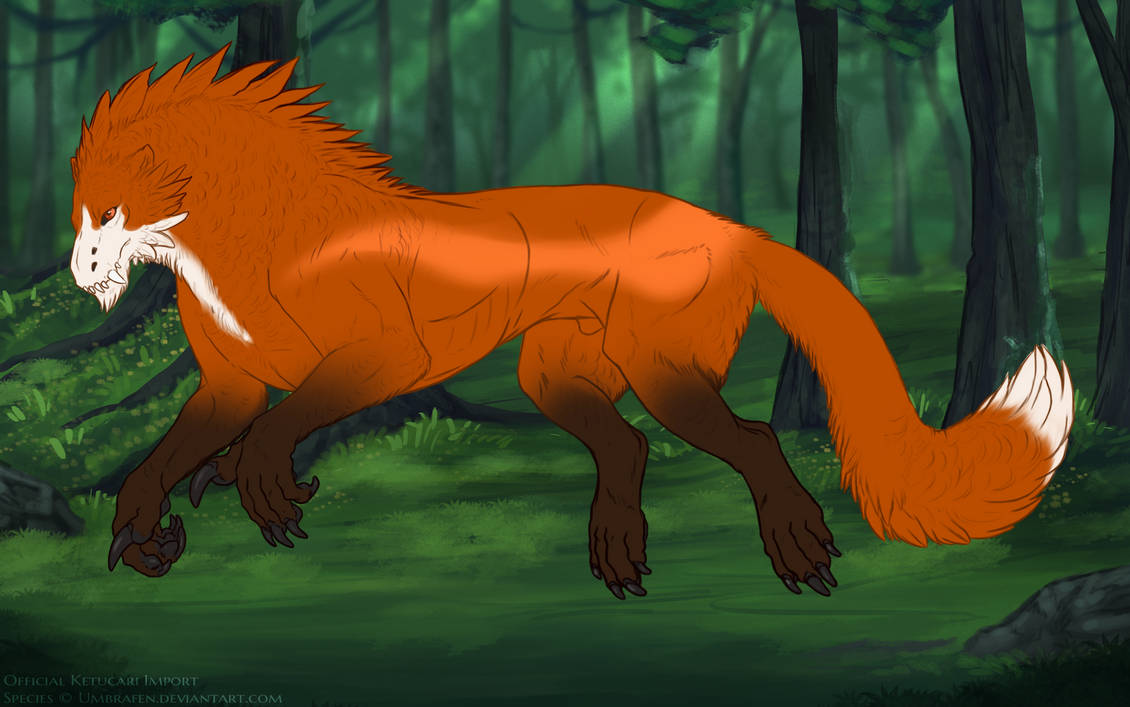Dusky Points
Examples

Basics
• In your ketucari's genotype, dusky points is denoted by the letters "nDsk" (heterozygous) or "DskDsk" (homozygous).
• In its heterozygous form, dusky points has a pass rate of 50%. Homozygous dusky points has a 75% pass rate.
Color
![]()
Dusky points must be a darker color of your chosen base, with a minor deviation in hue. It can also be a fully desaturated color of the base, as long as it is darker. Dusky points may be pure black.![]()

These colors would be acceptable for this base color. They are either a darker version of the base, or a darker and desaturated version of the base. The last color on the right shows a minor deviation in hue, and is slightly more yellow than the base itself. Notice that this small change is not overbearing.![]()

These colors would be unacceptable for dusky points. They are either lighter than the base coat or have too drastic a hue shift.
Range
There is no minimum for dusky points, but it must always be visible (unless a white marking covers it) and cover at least 10% of the maximum range. In general, the hued points on Eraku are a good example of minimal dusky points. While Eraku possesses hued points, the range is the same as dusky points:
Below is the maximum range for dusky points.
Interaction with Other Markings
• All markings can be layered under or over dusky points.
• Dusky points can be influenced by Inferno, Vapor, and Segment.![]() Dusky points can be affected by pale. It cannot resemble karpati if doing this.
Dusky points can be affected by pale. It cannot resemble karpati if doing this.![]() Dusky points may be affected by Empty, allowing it to appear as an outline or with a cutout.
Dusky points may be affected by Empty, allowing it to appear as an outline or with a cutout.
Accents
Here are some small accents you can add to your designs to make them more unique!
• Dusky points may have a subtle gradient that fades into the base coat, like below.
• Small cut-outs may be present in the marking, like below. 
• While dusky points generally calls for "natural" edges, stylization is allowed to some extent.
Excessive stylization (such as making your ketucari look like it has tribal tattoos) will cause the design to be rejected. Here are some examples of acceptable stylization shapes:







